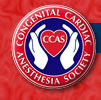About This Meeting
- Meeting Information
- Objectives
Education Mission Statement
The annual Winter/Spring Meeting will focus on topics of interest to those who provide anesthesia, sedation, pain management, and critical care services to infants and children. The overall goals for attendees of the program are to reinforce and enhance their existing fund of knowledge, and to introduce them to new and state-of-the-art techniques and information that affect their practice and improve the perioperative/critical care of pediatric patients.
Scope & Types of Activities
The program brings together experts from clinical and basic science disciplines related to pediatric medicine, anesthesia, and surgery.
General topic areas include anatomy, pathophysiology, anesthetic pharmacology, sedation, pain management, patient safety, and child advocacy. We will also discuss practice and career management issues. The presentation format is varied, and includes lectures and refresher courses, panel discussions, hands-on workshops and problem-based learning discussions. Additionally, an important part of the program is the presentation of new clinical and basic science research in oral and moderated poster-discussion forums. Significant attendee involvement and feedback are encouraged in all aspects of the program, and will be facilitated by the use of real time computerized audience polling as well as sessions where the audience directly participates in case discussions. Program content is, in fact, the direct result of membership input and extensive audience polling at prior meetings.
Target Audience
This program is intended for anesthesiologists and other practitioners who care for children in their practice of anesthesiology and/or critical care. It is also intended for clinical and basic science researchers whose areas of investigation relate to pediatric anesthesia.
Objectives
Oxidative Stress and End Organ Injury: Basic Science and Clinical Perspective
At the conclusion of this lecture the participant will understand the basic science and clinical relevance of oxidative stress as it applies to children with congenital heart disease.
Supplemental Oxygen in the Peri-natal Period: Friend or Foe?
At the conclusion of this lecture the participant will understand the risks and benefits associated with use of supplemental oxygen in the peri-natal period with particular emphasis on neonates with congenital heart disease.
Pulse Pressure Analysis in Children; Past, Present, and Future
At the conclusion of this lecture the participant will understand the physiology of pulse pressure analysis and its ability to predict the presence of preload recruitable stroke work in infants and children.
Non-Invasive Cardiac Output Determination in Children
At the conclusion of this lecture the participant will understand the methodology and limitations of currently available non-invasive technologies to determine cardiac output in infants and children.
Fontan Patient for Posterior Spinal Fusion
At the conclusion of this session the participant will understand the anesthetic
implications and management strategies that can be employed in the care of a
Fontan patient undergoing a posterior spinal fusion.
Pulmonary Hypertensive Crisis during Broviac Catheter Placement
At the conclusion of this session the participant will understand the anesthetic
implications and management strategies that can be employed in the treatment
of a pulmonary hypertensive crisis during placement of a broviac catheter.
Laproscopic Nissen fundoplication in a 3 month old s/p Norwood Stage I
At the conclusion of this session the participant will understand the anesthetic
implications and management strategies that can be employed in the care of a
Stage 1 Norwood patient undergoing laparoscopic Nissen fundoplication.
Recombinant Factor VIIA: Use or Abuse
At the conclusion of this session the participant will understand the arguments
both pro and con for the use of rFVIIa to treat bleeding following surgery to
correct congenital heart lesions.
Hypoplastic LV – The Pathological Spectrum
At the conclusion of this lecture the participant will understand the pathological
spectrum of lesions associated with the hypoplastic left ventricle.
New Concepts in Surgical LV Rehabilitation
At the conclusion of this lecture the participant will understand the surgical
options available to stage a child with a hypoplastic left ventricle and associated
small left sized structures to a two-ventricle circulation.
The Role of Non-Invasive Imaging in Assessing Suitability for LV Rehabilitation
At the conclusion of this lecture the participant will understand the role of non-
invasive imaging in determining the ability of a hypoplastic left ventricle to
eventually support a two-ventricle circulation.
Jeopardy
This session will encourage audience participation in the evaluation of various
clinical scenarios, interpretation of diagnostic studies and discussion of
decision-making processes in children with congenital heart disease in the
perioperative period.

